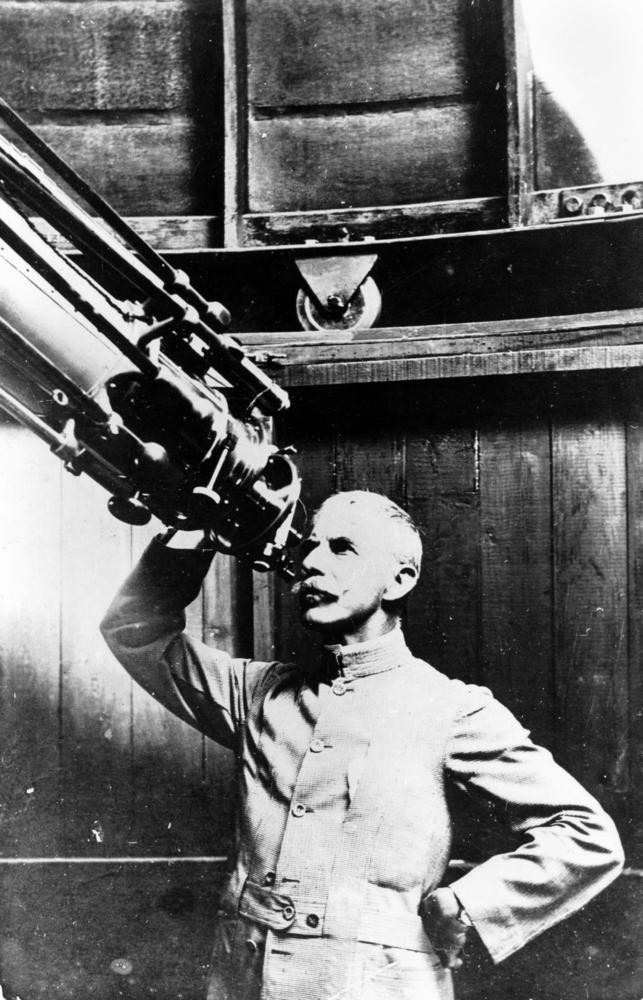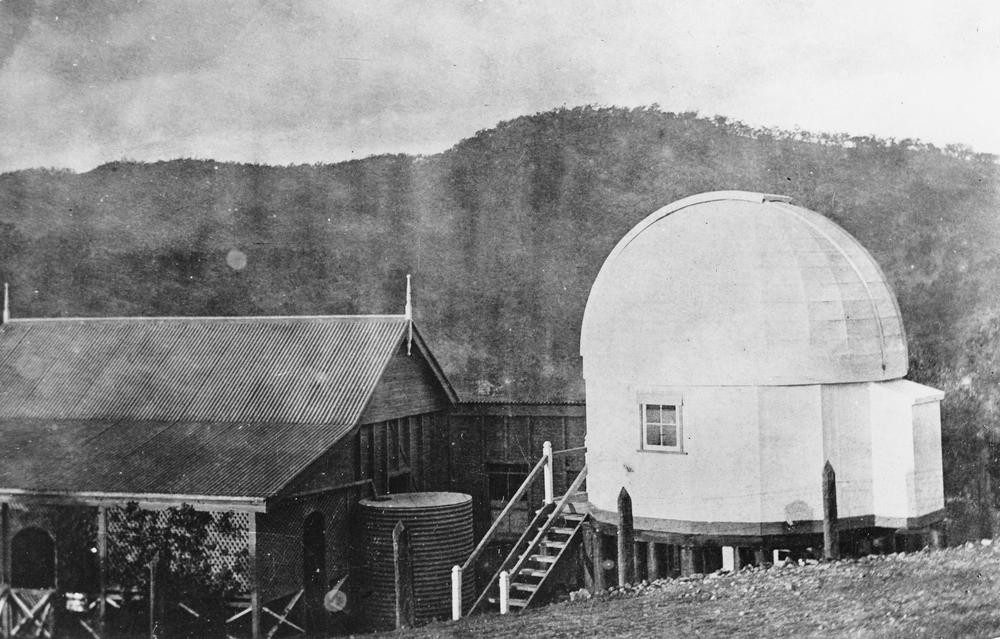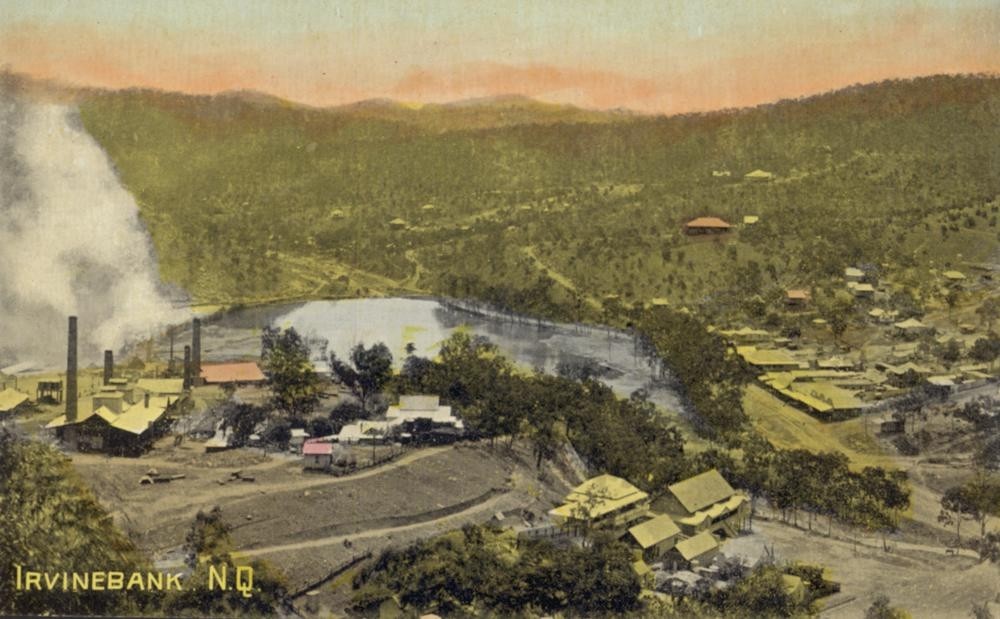The country doctor and the exploding star
By Simon Miller - Library Technician, State Library of Queensland | 10 August 2012
Dr William Evan McFarlane was born in 1866 on the island of Lifou near New Caledonia in the Pacific. Presumably his parents were missionaries and he later served as a missionary for several years in Mongolia. He graduated as a medical doctor from Edinburgh University in 1900 and in 1906 he took charge of the Walsh District Hospital at Irvinebank, a mining town in North Queensland. He is usually described as a bachelor although there is one reference to his having lost a wife in childbirth in the UK.
Dr McFarlane was a central figure in the life of the town and district. The town of Irvinebank was at its short peak of prosperity during the thirteen years that Dr McFarlane was there. Irvinebank was founded to service the local tin mines, the most successful of which was the Vulcan Mine discovered by a group of Italian woodcutters in 1888. The town declined rapidly after most of the tin ran out and the Irvinebank Mining Company that owned the battery and smelting works was sold to the State Government in 1919.
The town's doctor was of vital importance for his medical work but Dr McFarlane had other talents as well. The newspapers of the time record him playing the organ for a Masonic function and appearing in a local variety show singing comic songs and accompanying himself on the piano. He built a small roller-skating rink under his house for the use of the local children and was also a keen amateur astronomer. In 1910 he purchased a fine 7 inch refracting telescope and built an observatory with rotating dome to house it behind his house on Hospital Hill.

Dr McFarlane looking through the telescope at Irvinebank.
He had ambitions to use the telescope for some serious astronomical observation but found that "... my professional duties as a country doctor often rush me off from viewing stars and measuring distances to viewing patients' tongues & trying to measure their distance from this world to the one beyond instead." He did have some success, being one of a number if independent discoverers of an exploding star officially known as Nova Aquilae 1918. This suddenly bright star appearing in the constellation of Aquila was the brightest nova since 1604. Dr McFarlane named it the Vulcan Star after the successful tin mine but his observation was not officially recorded. He was elected a member of the Royal Astronomical Society in 1918.
William McFarlane died in 1919, falling victim to an influenza epidemic after leading the battle against the disease for several exhausting weeks. He was just 52 years old. His funeral was a major event in the history of the town as here described in the Cairns Post.
The funeral was by far the largest and most impressive ever seen in Irvinebank. The cortege was of considerable distance, and the remains were followed to their last resting place by practically the entire population of the town, while residents came from Stannary Hills and other centres to pay their last tribute to the doctor's memory. Sorrow at his death was widespread and heartfelt. The coffin was hung with wreaths sent by those who had known him and revered him in life, and who mourned the death of a physician who gave his life in the service of suffering humanity. To the children he was a patron, consoler and fairy godfather. When they needed a football, sets of cricket tools, or other implements of outdoor sport, it was to the doctor they went with their requests, which were never once turned down. They marched in a sorrowing group fully 200 strong, and were given pride of place next to the hearse, as he would have wished. Stepping behind them were men and women, old and young, who had memories of his patient interest in their well-being, his public and private generosity, and his nobility. Prominent citizens, who have been associated with the progress of the district, felt that they had lost a co-worker, as well as a friend, and by their presence paid their last sad tribute to the memory of Dr. McFarlane. The pall-bearers were Mr. J.H. Reid, managing director, Irvinebank Mining Company; Mr. John Farquhar, manager, Queensland National Bank; Cr. E. V. Borghero, chairman of the Walsh Shire Council; Mr. F. J. Robinson, president of the Walsh District Hospital Committee; Mr. James Tunnie, metallurgist, of the Irvinebank Company; and Mr T. Delugar, manager, Jack and Newell's. An impressive service was read at the graveside by Rev. St Clair. The remains were interred at the wish of Mr. Reid, in that portion of the cemetery where Mrs. Reid was laid to rest a few days ago.
His telescope was bought by Saint Ingatius College in Sydney where it is still in use in their Riverview Observatory.

Dr. MacFarland's Telescope & observatory, Irvinebank.
Dr McFarlane features a number of times in Two White Swans : reminiscences of Irvinebank and Stannery Hills, Far North Queensland 1915-1935. Mary Cummings gives us this description.
William McFarlane was the doctor at the Irvinebank hospital when I was young and I recall him as an imposing individual in a salt-and-pepper suit, white collar, short hair and erect bearing, especially on horseback. Evidently he had served in the Boer War.
Josie Turner remembers the funeral.
Dr. McFarlane was a bachelor and was very popular, and the whole community turned out for his funeral. It was remembered as one of the biggest ever in Irvinebank. Mum made a wreath of pawpaw flowers (there weren't many flowers about as the goats used to eat them all!) which was laid on the coffin. Mum was actually pregnant at the time but she wanted us to go to the funeral so she sent me down to Jack & Newell's store on the morning of the funeral to get myself a new pair of black shoes.
The funeral procession moved off from the Catholic church with the coffin on a modified four wheeled wagon drawn by four men. Everybody followed on foot, two by two, and by the time we got to the dam wall just below Dr. McFarlane's house and observatory, I had to stop as I had blisters on both feet from my new shoes. I sat on the roadside by myself for a while wondering what to do, and eventually followed in bare feet, carrying the shoes, and arrived at the cemetery just as the burial was finishing.

Comments
Your email address will not be published.
We welcome relevant, respectful comments.